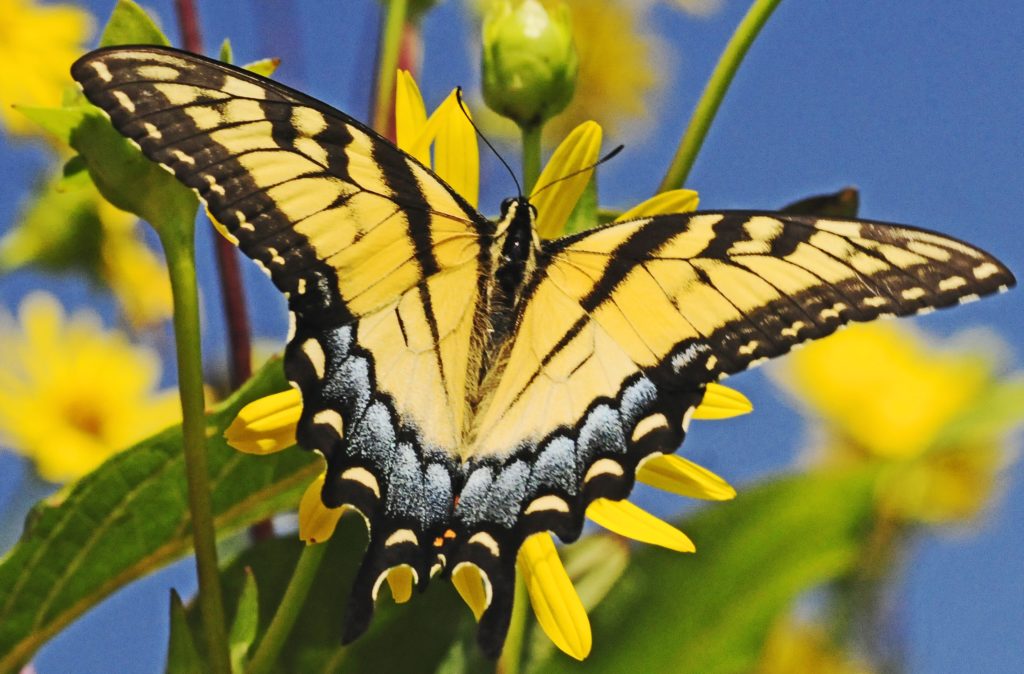How well are you stewarding that part of God’s earth that is under your care? Are you giving it any thought?
You and I can learn from Gabe Brown in that respect. Gabe Brown is a Christian farmer in North Dakota who is helping to change American agriculture for the better. He transitioned his family’s farm from conventional, chemical-dependent farming practices to a creative, Creation-friendly, profitable system. For years now, he has been tirelessly sharing his lessons with farmers around the country.
In his talks and interviews, Gabe recalls that before he made that transition in farming, his focus on most days was how to kill things. Weeds and bugs were his enemies. Now, in contrast, he wakes up each day trying to figure how to bring more life to his farm through cover crops, grazing, and other nature-mimicking approaches.
Gabe makes clear that creatively striving to bring more life to the land is rewarding, energizing, and just more fun.
I urge you, as part of your whole Christian faith, to make the commitment to bring more life to your corner of God’s earth.

This is what life looks like on a landscape – plants providing what wildlife (in this case, an eastern tiger swallowtail butterfly) need. For this native butterfly to live and thrive, it needs both host plants and nectar plants. Your yard or your church property can provide both. (Photo courtesy of Joan Sayre)
I urge you to then choose how to best act on that commitment.
One excellent way is to grow food. There is much more to write on that. And I will!
But another way I want to bring your attention to is this – managing your landscape so it feeds and shelter birds, butterflies, and other wildlife. Speaking in general terms, this boils down to planting native plants on your landscape and minimizing the use of chemicals that are directly or indirectly harmful.
Just like Gabe Brown has gone against the flow of conventional farming culture, Creation-friendly landscaping goes against the flow of conventional American landscape culture.
Are you willing to go against mainstream culture for your faith?
Culture is the invisible voice that tells us what should be done and how for reasons that we really can’t explain. The lawn is the centerpiece of American landscape culture. For reasons we can’t explain a yard, cemetery, or church property without lawn just doesn’t feel right. This compulsion is invisible to us. It is just what we expect to see.
And we see a lot of it. According to this article, a NASA study estimates that there are over 63,000 square miles of the United States is devoted to turf. That is three times more than any other irrigated crop grown in our country. It is approximately the size of Texas.
We as Christians, however, should not blindly accept the culture around us. We’re called to consciously question every element of the culture we find ourselves in and determine whether it is consistent with the core threads and values of the Bible.
Israel was threatened by the lure of surrounding cultures and their gods. The story of the Good Samaritan is a story of God-honoring love triumphing over culturally formed dividing lines. Paul’s letters reveal early churches wrestling with questions of local cultures that were sometimes contrary to Christian values. One of the factors behind Christianity’s early spread was how its followers were willing to live out a charitable, loving culture in stark contrast to Roman culture.
It’s time Christians questioned the lawn culture.
When you do so, you will find that the pristine lawn as the default and unquestioned landscaping option is, in fact, contrary to a Christian perspective. This is not to say that there isn’t a place for lawn in our landscapes where there is abundant rainfall, especially when it isn’t dowsed with excessive chemicals and fertilizers. It does bring order. It offers a place to play. There are places where vegetation close to a building is not a good thing.
But the lawn culture at its most extreme is inconsistent with a whole Christian faith.
It reflect a compulsive need to control nature to the extent that we damage and exterminate it. It is built on a culture of figuring out how to kill things. It deprives God’s wildlife of sustenance and shelter. It is a culture of selfishness at odds with what we see of God in Jesus and the rest of the Bible.

A lawn with nothing but bluegrass offers sustenance to ZERO butterflies and other pollinators which are essential elements in God’s very good Creation.
And that says nothing of how lawns are usually kept green and weed-free.
In practical terms, lawn maintenance for most Americans means using chemicals to keep the lawn as green and bug-free as possible. These chemicals are not benign. Follow this link to a chart showing potential and known health issues of the 30 most commonly used lawn chemicals. Here’s a quick summation. Of 30 commonly used lawn pesticides, 16 are linked with cancer or carcinogenicity, 12 are linked with birth defects, 21 with negative reproductive effects, 25 with liver or kidney damage, 14 with neurotoxicity, and 17 with disruption of the endocrine (hormonal) system. Of those same 30 lawn pesticides, 19 are detected in groundwater, 20 have the ability to leach into drinking water sources, 30 are toxic to fish and other aquatic organisms vital to our ecosystem, 29 are toxic to bees, 14 are toxic to mammals, and 22 are toxic to birds.
Do you want your children rolling in those kinds of chemicals? Our pets, too, are at risk.
In light of all of the above, the lawn is actually a symbol of the false understanding of dominion that Christians have extracted from Genesis 1. Dominion, when you read the Bible simplistically and under the influence of self-centered human culture, comes to mean domination. The assumption of the culture of domination is that the decline, diminishment, destruction, and disappearance of other life on God’s earth are acceptable collateral damage in our pursuit of power and comfort.
in contrast, Christians living out a whole Christian faith will naturally want to be pro-life in the largest sense of the word. That must translate into how they landscape their own properties and their churches’ land.
You and I will know when Christians are truly pro-life when instead of commenting on how green and weed-free their lawns are they compare notes (and perhaps even compete?!) about the numbers and diversity of birds, butterflies, and pollinators they’ve been able to attract to their yards.
I’m happy to say there are Christians who are already purposefully and creatively bringing life to their corner of God’s earth. I will be sharing their stories. This will lead, too, to practical tips and advice. I hope all of this will be the springboard for you to think again about how to best shape the health of the corner of God’s earth that you have responsibility for.
One of the things I will highlight in those coming posts is the rewards of this approach to stewarding your yard or property. You will grow in knowledge. You will grow in observation skills and how to think and act holistically. You will experience wonder.
And like Gabe Brown, you will wake up and enjoy the challenge of how to bring more life.




